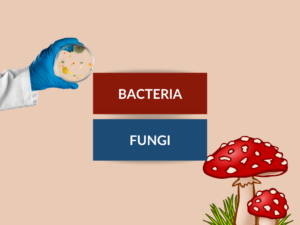Introduction
Molds and yeasts are types of fungi that play significant roles in various aspects of our lives. While they share similarities, they also have distinct differences. In this article, we will explore the characteristics, examples, uses, and differences between molds and yeasts.
What are Molds?
Molds are a type of multicellular fungi that grow in the form of filaments called hyphae. They reproduce by forming spores and thrive in moist environments. Molds can be found both indoors and outdoors, and they can cause various health issues and damage to buildings and food.
Examples of Molds
- Penicillium
- Aspergillus
- Cladosporium
- Stachybotrys
- Alternaria
Uses of Molds
Molds have several practical applications in different industries:
- Production of food (cheese, soy sauce, tempeh)
- Pharmaceutical production (production of antibiotics)
- Bioremediation (decomposition of organic waste)
- Research and development (study of genetic traits and diseases)
- Production of enzymes (used in various industrial processes)
What are Yeasts?
Yeasts are unicellular fungi that belong to the group Ascomycetes. They are widely known for their ability to ferment sugars and produce carbon dioxide and alcohol. Yeasts are commonly used in baking, brewing, and other fermentation processes. Unlike molds, yeasts prefer anaerobic environments and reproduce through budding.
Examples of Yeasts
- Saccharomyces cerevisiae
- Candida albicans
- Cryptococcus neoformans
- Debaryomyces hansenii
- Pichia pastoris
Uses of Yeasts
Yeasts have various applications in different fields:
- Baking industry (leavening agent in bread and pastries)
- Brewing industry (fermentation in beer and wine production)
- Biotechnology (production of biofuels and enzymes)
- Pharmaceutical industry (production of vaccines and drugs)
- Research and laboratory applications (model organism for genetic studies)
Differences Between Molds and Yeasts
| Difference Area | Molds | Yeasts |
|---|---|---|
| Growth Form | Multicellular, form hyphae | Unicellular, form buds |
| Reproduction | Form spores | Reproduce through budding |
| Preferred Environment | Moist environments | Anaerobic environments |
| Function | Decomposition of organic matter | Fermentation of sugars |
| Examples | Penicillium, Aspergillus | Saccharomyces cerevisiae, Candida albicans |
| Uses in Food Industry | Production of cheese, soy sauce | Baking, brewing |
| Uses in Pharmaceutical Industry | Production of antibiotics | Production of vaccines |
| Cellular Organization | Multicellular | Unicellular |
| Mode of Growth | Extensive hyphal network | Budding into colonies |
| Occurrence | Both indoor and outdoor | Commonly outdoor, but can also be found indoors |
Conclusion
In conclusion, molds and yeasts are two types of fungi that possess distinct characteristics and have different applications. While molds are multicellular and thrive in moist environments, yeasts are unicellular and prefer anaerobic conditions. Molds are known for decomposition, while yeasts excel in fermentation processes. Understanding the differences between molds and yeasts helps in utilizing their unique qualities in various industries.
People Also Ask
- Q: Can molds and yeasts cause health issues?
A: Yes, molds and some yeasts can cause respiratory issues and allergies in sensitive individuals. - Q: Are all molds harmful?
A: No, not all molds are harmful. Some molds are used in food production and have beneficial applications. - Q: Can yeasts be beneficial for human health?
A: Yes, certain yeasts like Saccharomyces cerevisiae have probiotic properties and can promote gut health. - Q: Can molds grow in dry environments?
A: While molds prefer moisture, some species can survive and grow in dry conditions as well. - Q: Can yeasts grow without sugar?
A: While yeasts prefer sugar as a nutrient source, they can adapt and use other substances for growth.


